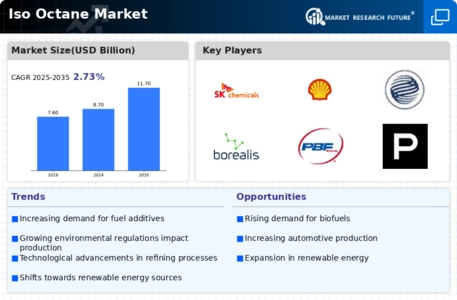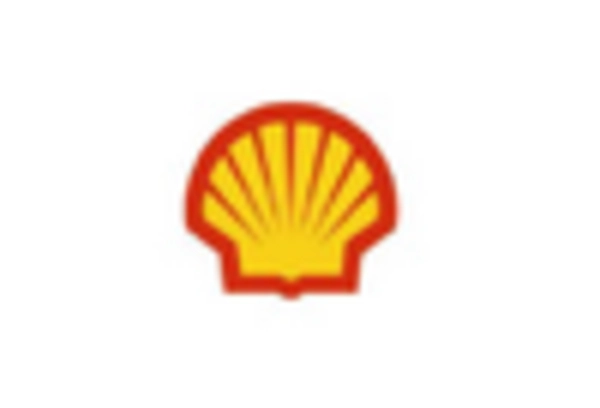Growth of the Automotive Sector
The expansion of the automotive sector is a key driver for the Iso Octane Market. As vehicle production continues to rise, particularly in emerging markets, the demand for high-performance fuels is expected to increase correspondingly. In 2025, the automotive industry is projected to grow by approximately 4%, with a significant portion of new vehicles being equipped with engines that require higher octane ratings. This trend is particularly pronounced in regions where consumers are increasingly favoring performance-oriented vehicles. The Iso Octane Market stands to benefit from this growth, as manufacturers seek to meet the fuel requirements of modern engines. Additionally, the increasing popularity of electric vehicles may also lead to a hybrid approach, where iso-octane remains relevant in the fuel mix.
Rising Demand for High-Octane Fuels
The Iso Octane Market is experiencing a notable increase in demand for high-octane fuels, primarily driven by the automotive sector. As consumers seek enhanced performance and fuel efficiency, manufacturers are responding by producing fuels with higher octane ratings. This trend is particularly evident in regions where stringent emission regulations are in place, compelling automakers to develop engines that require higher octane levels. In 2025, the demand for high-octane fuels is projected to rise by approximately 5% annually, indicating a robust growth trajectory for the Iso Octane Market. Furthermore, the shift towards turbocharged engines, which benefit from high-octane fuels, further propels this demand, suggesting a sustained interest in Iso Octane Market as a critical component in fuel formulations.
Emergence of Alternative Fuel Blends
The Iso Octane Market is witnessing a shift towards the development of alternative fuel blends that incorporate iso-octane. As the energy landscape evolves, there is a growing interest in blending traditional fuels with biofuels and other renewable sources. In 2025, it is estimated that the market for alternative fuel blends will expand by 8%, driven by consumer demand for sustainable options. Iso-octane, known for its high performance and compatibility with various feedstocks, is well-positioned to play a crucial role in these blends. This trend not only enhances the appeal of iso-octane but also aligns with the broader industry movement towards sustainability. As a result, the Iso Octane Market is likely to experience increased opportunities for growth and innovation.
Regulatory Support for Cleaner Fuels
The Iso Octane Market is positively impacted by regulatory frameworks that promote the use of cleaner fuels. Governments worldwide are implementing policies aimed at reducing carbon emissions and improving air quality, which often include incentives for the adoption of high-octane fuels. In 2025, it is anticipated that stricter emission standards will drive a 15% increase in the use of iso-octane in fuel blends, as it helps meet these regulatory requirements. This regulatory support not only encourages manufacturers to invest in iso-octane production but also fosters innovation in fuel formulations. Consequently, the Iso Octane Market is likely to see a surge in demand as compliance with environmental regulations becomes increasingly critical for fuel producers.
Technological Innovations in Refining Processes
Technological advancements in refining processes are significantly influencing the Iso Octane Market. Innovations such as catalytic reforming and isomerization have enhanced the efficiency of producing iso-octane from various feedstocks. These processes not only improve yield but also reduce production costs, making iso-octane more accessible to manufacturers. In 2025, it is estimated that advancements in refining technology could lead to a 10% increase in production capacity for iso-octane, thereby meeting the growing market demand. Additionally, these innovations contribute to the overall sustainability of the fuel production process, aligning with the industry's shift towards more environmentally friendly practices. As a result, the Iso Octane Market stands to benefit from both increased efficiency and reduced environmental impact.


















Leave a Comment